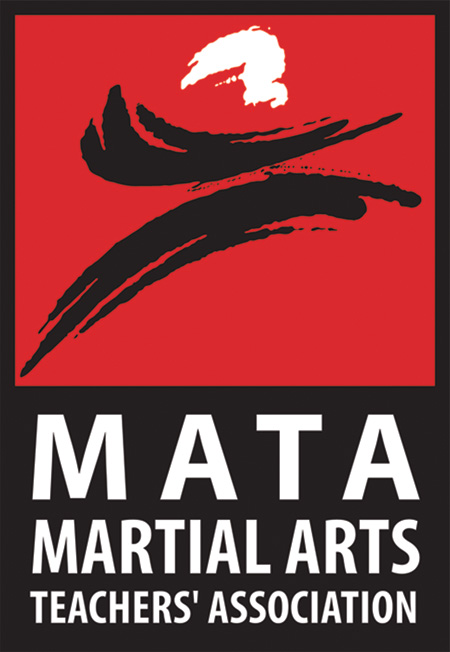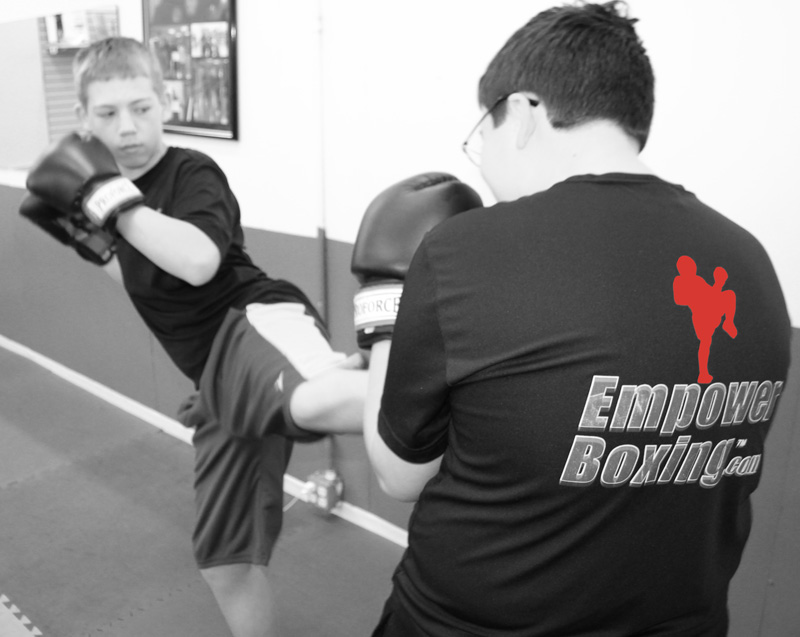Your selection to our Leadership Team is the result of numerous meetings, discussions and ”spirited lobbying” by your instructors to narrow the choices down to you; the best of the best. Your acceptance of a Leadership Team position is a big responsibility and should not be taken lightly.
We are totally dependent on our Leadership Team to help us maintain our, “Tradition of Excellence.” Our goal remains to provide the very best training for our students. This requires a motivated and talented leadership team.
As part of the tradition and heritage of the martial arts, students have always assisted the instructor to maintain the quality and integrity of the school. While we didn’t always have a title for the team, we had the desire to teach and the pride in our school to go the extra mile to insure our reputation as the best!
You too must have tremendous pride in your school and the desire to help others enjoy the benefits and excitement we offer. For this to happen, you must be very open minded and teachable. Teaching students our way requires very special qualities.
As a Leadership Team member, you will be trained in the art of communication. Much more than the technical skill of your sidekick, your skill as a successful communicator and motivator will determine your success as a teacher.
“Confidential”
As a Leadership Team member, you will be “taken into the kitchen.” You will understand more about the actual operation and management of this school. While there is nothing to hide from anyone, we prefer that this information stay in our Leadership Team classroom and not find its way into the locker room.
Most people prefer not to know what goes on in the kitchen of a restaurant. All they want to see is the beautiful meal served. We are no different.
Leadership Team Responsibilities
Leadership Team members must accept fully the following responsibilities in order to maintain their Leadership Team status. Failure to perform in these areas must result in the stepping down of a Leadership Team member (and returning of this manual) in order to allow another student a chance.
1. Leadership Team members teach a minimum of two -one hour classes per week.
2. Leadership Team members teach at least one 20-minute private lesson per week.
3. Leadership Team members must attend Leadership Team seminars, classes and workshops.
Our Commitment To Youtc “Our Commitment To You”
The very best tool for learning about yourself and your martial arts is to teach. We will provide you with the guidance to develop your martial arts teaching skills and the opportunity to apply that knowledge consistently. As you well know, our instructors are some of the very best teachers many of us have ever encountered. The teaching system that we have developed works and works well.
TEN Leadership Team TIPS FOR SUCCESS
1. New Leadership Team members assisting in a class should not wander and help. Instead, they would be most helpful as role models. By positioning next to the students having the most difficult time, they can execute with the class at a pace suitable for the target students.
2. More experienced Leadership Team members, with the instructor’s permission, may wander and correct.
3. Wandering corrections should be brief and led with a smile.
4. It’s very important to keep moving. Try and make contact (a gentle, guiding hand) with each student twice during a class. Avoid hovering over one person. This tends to make them all the more nervous and error prone.
5. If you make a verbal correction, make it quickly and move on. Do not over-explain or allude to the obvious. Examples would be phrases such as, “this is a fist,” or “this is your belt.” Being a student doesn’t translate to total ignorance.
6. Correct and Praise – Try to find something good to say along with a correction. An example might be, “Joey, your sidekick is straight as an arrow, now let’s get that foot to blade and you’ll have a black belt kick!”
Do not praise if it is not for real. If it is not a good job, don’t say, “good job!” It’s phony and everyone knows it. However, you will usually be able to find something about the technique worthy of note. Maybe it’s the snap or the knee positioning or just the effort. Be sincere, your students will respect it.
7. Never speak to a student while an instructor is speaking to the class.
8. Always support the school and its efforts. If we have a change or a challenge, never get caught up in a negative conversation about it. If you hear a student nay-saying something, back the school up and help them to understand why it’s in their best interest to ride the horse in the direction it’s going.
9. If you are leading a group or single student, do not make more than one correction per step. Resist the urge to correct every student in the group after only one step. By the time you get to the last person, the first one is already bored and forgotten what you told them.
When working with one student, do not correct every element of their balance, posture, shoulders, weight distribution, angles. power and so on. Keep the pace moving with. For example: “Step. Eyes straight. Step. Square those shoulders. Step. Good power, now punch down the center. Step. slide those feet like a cat. Step. there! Now point your feet straight!”
10. Use your voice, face and body! What is the opposite of love? Is it hate? No, it’s indifference! When you lead a group with a stone face, and a monotone voice, you are conveying a message of indifference and boredom!
If you want enthusiasm from a group you have to give enthusiasm to the group! When you want power, you turn the volume up and put power into your words. When you want slow technique for form, you speak a little slower and softer.
In any case you must project loud enough for everyone not to just hear your voice but to feel your energy. Too many of us have a blast teaching but never get around to telling our face about it! Loosen up and have some fun. Karate shouldn’t mask emotions rather it should allow you the confidence to be more expressive.
Before Class
Five minutes before a kid’s class, you would like to be interacting with the students and getting a feel for their mental state. Are they excited or tired? This will tell you a lot about the warm up you will do.
Help the less excited by taking their mind off the day’s challenges. Maybe you could ask them if there is anything you could help them with before class. Another very good question is, “How do you feel about your next exam?” Or, “How did your test go?”
Not only does this show interest and caring but it gives you a great opportunity to follow up with some quality one-on-one by reviewing the techniques they may be concerned with or struggled with on the exam.
Two-minutes before class, you can start lining them up with the shorter students up front (have the kids sit down for the last minute or so to insure they stay in line). This time can also be spent collecting cards and talking to the students about their martial arts and previewing the exciting class they are about to have.
Caution, do not talk down to students regardless of age. With kids, you may watch your vocabulary level but have fun with them. They want to have fun with you, so it’s OK to joke a bit as long as you don’t allow things to get silly.
Class should be fun but not funny. A little fun works as comedy relief but should not be your theme nor should the laugh be at the expense of another person.
What Do I Do?
Time Management For A Leadership Team Member
During Class
Warm ups are tailored to the theme of the class. If the class will spar, have them do movement drills and combinations in a loose, free form manner. Do not have a group of students with their sparring gear on execute horse stance punching, basics or forms.
Remember, stretching is part of the workout, not the warm up. Students should get a little sweat going to insure the muscles are warm and ready for stretching.
During class you will want to learn to, “read the instructor.” If the instructor is demonstrating a technique, then, with permission, you can wander and correct as the students try to model the instructor.
Then, if the instructor stands up and starts to wander, you can jump into the demonstrating position. If the instructor is wandering, you can provide a visual example for the students. If the instructor is demonstrating, you can wander and make corrections.
Always position yourself so the students can see you. If you have a Leadership Team partner, then one of you would work the front and the other would work the back. Then, when the class turns around they have a model to follow.
Corrections while wandering should be very brief and not as much commanding as suggesting. For instance, as a blue belt, you may have less success with a sharp, “blade your foot!” than you would with a kind but firm, “don’t forget to blade your foot” or “let me help you blade your foot.”
It’s very important to allow someone to maintain his or her dignity when being corrected. This is not the place for power-hungry egos.
Your tone is one of stern encouragement and always with a positive attitude. In their enthusiasm to do a good job, new Leadership Team members tend to over-explain and over-correct. Less is best in the beginning or, for that matter, at any time. Choose your words wisely and they will carry more weight and power.
After Class Seek the Silence
Silent students are often taken for granted since they seem to always be there and never seem to have a problem with anything. In fact, they’re so quiet you hardly notice when they are gone. That’s the danger.
Seek these students out and introduce yourself. Engage them in conversation with questions such as, “How are your classes coming along?” or “How did you do with that new kick?” or “Are you looking forward to your exam?”
In addition to the silent students, seek out the students who struggled in class and offer, if they have time, to review the material for them. This is where Leadership Team serves a great function for the entire school.
Our instructors are swamped after every class and many students will not ask for help from them because they seem so busy. Leadership Team fills the gap and reaches the students that need that extra help.
Private Lessons
This is where you, “cut your teeth.” One-on-one private lessons provide you with a variety of students, ranks and situations to learn from. It’s very important that you establish the time you will be teaching privates. As the week goes by, check the appointment book to see who you are working with and what material they want covered.
This gives you a chance to prepare and seek out help you may need on how to teach something.
Privates are only 20-minutes long so they can’t really cover more than one or two techniques with very little if any warm up. The student should know what they need to work on and you want to focus completely on it.
If, for instance, the student wants to work on round kick and after 10 minutes you feel you’ve covered it completely, grab a target and let them work round kick on the target. Have them hold the target for you so they can see how it’s done.
Be sure to watch your clock so you can review and end at the 20 minute mark. Finish by walking the student off the deck and, in the case of children, touching base with the parents and updating them on what was covered and your recommendations tor practice at home.
What Is My Real Contribution?
Your high profile role is as an instructor-in-training. However, often the more critical but less measurable and certainly lower profile role is as a mentor / liaison for the students.
Often students are more at ease talking to a Leadership Team member than a high ranking Black Belt. Cultivate that rapport into relationships of trust and caring. You may have no idea how powerful your simple, “Hello. Nice to see you,” comment is to a student.
People do not get praised enough in our world. In most cases, the last time someone heard any applause was at their high school graduation!
Here is a chance for you to really make a difference in someone’s life. By helping them to feel more comfortable at this school we, as a team, have a much better chance of getting them to believe in their potential. If we can get that belief we can get the person to Black Belt! It’s worked with us and with your help, it will work with others!



